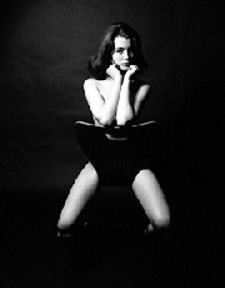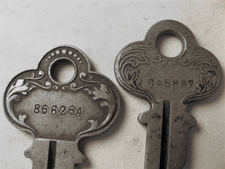This article hits an answer right on the head without realizing it. The author then moves on, still looking for it:
For Him Magazine, and the other lad mags like Maxim and Umm, occupy a strange, liminal place in the territory of contemporary male desire. They exist to allow men to look at women's bodies sexually but not pornographically. With the emphasis on suggestion rather than revelation, the women in their pages are slick materialistic ideals, as current in their smooth plastic forms as the Prius or iPhone.
OK, to really see the answer, as it struck me when reading it, you have to tweak that sentence a bit to read, "The emphasis is on suggestion rather than revelation, yet the women in their pages are slick materialistic ideals."
I've been lucky, as a man, because I've always found sensual suggestion far more arousing than explicit display. If it sounds like a brag, it's not. I had nothing to do with it. I just was put together that way. A half-concealed woman is a powerful thing, if she chooses how to display herself and does so with an eye to drawing my eye. A naked woman's body is a biological fact. A woman dressed to seduce is an inhabited beauty, a promise of pleasure, a flame from Heaven.
It's the person inside all that flesh and fabric that is the goal of sexual desire. Sex, along with love but not identical with it, bridges the awful gap of solitude that the skull binds us into.
I still much prefer looking at the photo spreads in old Playboys, pre-1974 or so, to anything since. The removal of the taboo against pubic hair and the descent into full-frontal made a difference in that publication. It's not that the thing itself offends me [and the article cited above closes with a repetition of the old Ruskin story, which many scholars now think to be wrong: it probably was menstruation, not pubic hair, that shocked him]. But the nakedness of the models simply changed the nature of what was being done. And ultimately it changed the models.
Before, you had very different young women with very different body types. If she had a full bosom, chances are she had curves everywhere. If she was long and leggy, she had small breasts. The photographers played with this, dressed the models and turned and posed them to present interesting angles. It was a flamenco; afterward, it was just a dull strip. And it's probably no coincidence that the silicon and shellac look began to dominate the centerfolds about the same time.
Allure is the woman's art of making real flesh appear divine. It is not surgical. "Explicit" and "naked" are its poisons.
And there's the reason magazines like "Maxim" fail for me. They take the methodology and visual language of allure, and they use it to describe women who have been manufactured to be seen naked, not those to whom it properly belongs. They use poetic diction to write user manuals.


